#my haiku poetry
Text
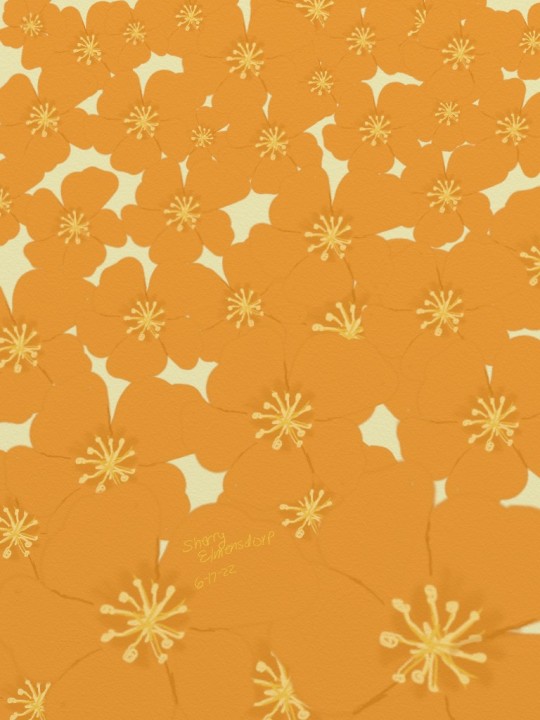
@artbysherryle my poem and artwork.
Where am I from
Submitting to @writerscreed challenge
One golden Poppy
Amongst infinite Poppies
In the golden state
97 notes
·
View notes
Text
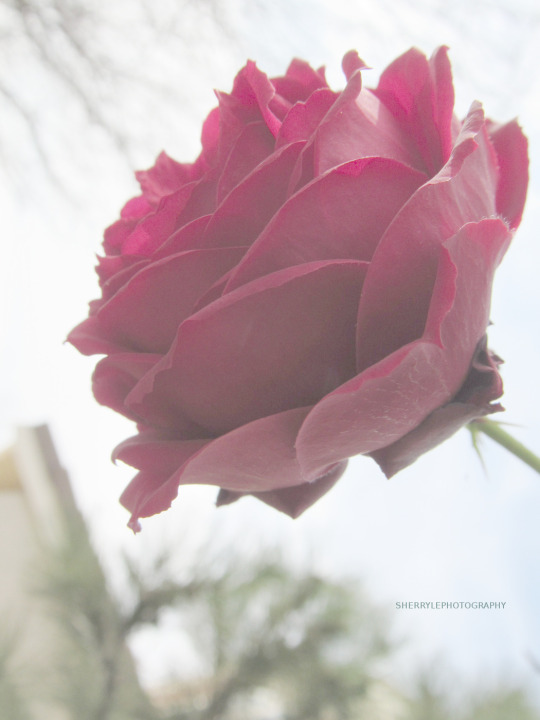
Sherrylephotography. April 2022
Thank you @goneahead for your help in rewriting my haiku. Sounds much better. You have a awesome blog with wonderful tips, poetry, art, photography and so much more.
Spring's bounty of red
Catches me by surprise
A joyous skyward climb
#my haiku poetry#photographers on tumblr#original photography on tumblr#sherrylephotography#@goneahead
192 notes
·
View notes
Photo


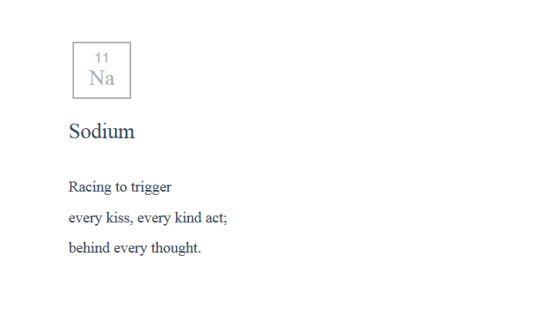

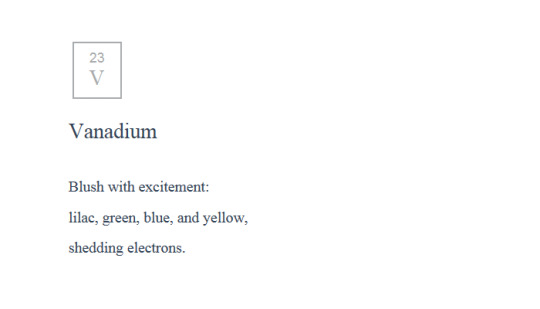
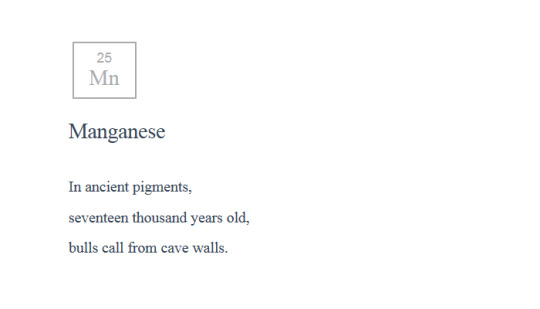


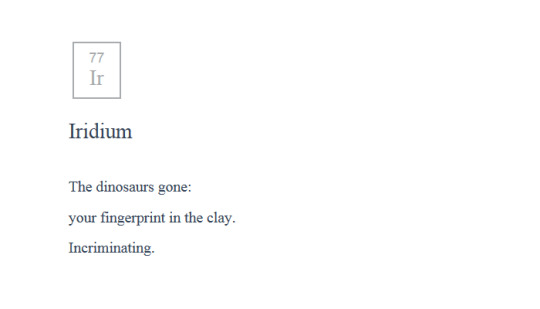
Mary Soon Lee, from Elemental Haiku: Poems to Honor the Periodic Table, Three Lines at a Time
18K notes
·
View notes
Text
None Of You Know What Haiku Are
I'm going to preface this by saying that i am not an expert in ANY form of poetry, just an enthusiast. Also, this post is... really long. Too long? Definitely too long. Whoops! I love poetry.
If you ask most English-speaking people (or haiku-bot) what a haiku is, they would probably say that it's a form of poetry that has 3 lines, with 5, and then 7, and then 5 syllables in them. That's certainly what I was taught in school when we did our scant poetry unit, but since... idk elementary school when I learned that, I've learned that that's actually a pretty inaccurate definition of haiku. And I think that inaccurate definition is a big part of why most people (myself included until relatively recently!) think that haiku are kind of... dumb? unimpressive? simple and boring? I mean, if you can just put any words with the right number of syllables into 3 lines, what makes it special?
Well, let me get into why the 5-7-5 understanding of haiku is wrong, and also what makes haiku so special (with examples)!
First of all, Japanese doesn't have syllables! There's a few different names for what phonetic units actually make up the language- In Japanese, they're called "On" (音), which translates to "sound", although English-language linguists often call it a "mora" (μ), which (quoting from Wikipedia here) "is a basic timing unit in the phonology of some spoken languages, equal to or shorter than a syllable." (x) "Oh" is one syllable, and also one mora, whereas "Oi" has one syllable, but two moras. "Ba" has one mora, "Baa" has two moras, etc. In English, we would say that a haiku is made up of three lines, with 5-7-5 syllables in them, 17 syllables total. In Japanese, that would be 17 sounds.
For an example of the difference, the word "haiku", in English, has 2 syllables (hai-ku), but in Japanese, はいく has 3 sounds (ha-i-ku). "Christmas" has 2 syllables, but in Japanese, "クリスマス" (ku-ri-su-ma-su) is 5 sounds! that's a while line on its own! Sometimes the syllables are the same as the sounds ("sushi" is two syllables, and すし is two sounds), but sometimes they're very different.
In addition, words in Japanese are frequently longer than their English equivalents. For example, the word "cuckoo" in Japanese is "ほととぎす" (hototogisu).
Now, I'm sure you're all very impressed at how I can use an English to Japanese dictionary (thank you, my mother is proud), but what does any of this matter? So two languages are different. How does that impact our understanding of haiku?
Well, if you think about the fact that Japanese words are frequently longer than English words, AND that Japanese counts sounds and not syllables, you can see how, "based purely on a 17-syllable counting method, a poet writing in English could easily slip in enough words for two haiku in Japanese” (quote from Grit, Grace, and Gold: Haiku Celebrating the Sports of Summer by Kit Pancoast Nagamura). If you're writing a poem using 17 English syllables, you are writing significantly more content than is in an authentic Japanese haiku.
(Also not all Japanese haiku are 17 sounds at all. It's really more of a guideline.)
Focusing on the 5-7-5 form leads to ignoring other strategies/common conventions of haiku, which personally, I think are more interesting! Two of the big ones are kigo, a season word, and kireji, a cutting word.
Kigo are words/phrases/images associated with a particular season, like snow for winter, or cherry blossoms for spring. In Japan, they actually publish reference books of kigo called saijiki, which is basically like a dictionary or almanac of kigo, describing the meaning, providing a list of related words, and some haiku that use that kigo. Using a a particular kigo both grounds the haiku in a particular time, but also alludes to other haiku that have used the same one.
Kireji is a thing that doesn't easily translate to English, but it's almost like a spoken piece of punctuation, separating the haiku into two parts/images that resonate with and add depth to each other. Some examples of kireji would be "ya", "keri", and "kana." Here's kireji in action in one of the most famous haiku:
古池や 蛙飛び込む 水の音
(Furu ike ya kawazu tobikomu mizu no oto)
(The old pond —
A frog jumps in
The sound of the water.)
You can see the kireji at the end of the first line- 古池や literally translates to "old pond ya". The "ya" doesn't have linguistic meaning, but it denotes the separation between the two focuses of the haiku. First, we are picturing a pond. It's old, mature. The water is still. And then there's a frog! It's spring and he's fresh and new to the world! He jumps into the pond and goes "splash"! Wowie! When I say "cutting word", instead of say, a knife cutting, I like to imagine a film cut. The camera shows the pond, and then it cuts to the frog who jumps in.
English doesn't really have a version of this, at least not one that's spoken, but in English language haiku, people will frequently use a dash or an ellipses to fill the same role.
Format aside, there are also some conventions of the actual content, too. They frequently focus on nature, and are generally use direct language without metaphor. They use concrete images without judgement or analysis, inviting the reader to step into their shoes and imagine how they'd feel in the situation. It's not about describing how you feel, so much as it's about describing what made you feel.
Now, let's put it all together, looking at a haiku written Yosa Buson around 1760 (translated by Harold G. Henderson)
The piercing chill I feel:
my dead wife's comb, in our bedroom,
under my heel
We've got our kigo with "the piercing chill." We read that, and we imagine it's probably winter. It's cold, and the kind of cold wind that cuts through you. There's our kireji- this translation uses a colon to differentiate our two images: the piercing chill, and the poet stepping on his dead wife's comb. There's no descriptions of what the poet is feeling, but you can imagine stepping into his shoes. You can imagine the pain he's experiencing in that moment on your own.
"But tumblr user corvidcall!" I hear you say, "All the examples you've used so far are Japanese haiku that have been translated! Are you implying that it's impossible for a good haiku to be written in English?" NO!!!!! I love English haiku! Here's a good example, which won first place in the 2000 Henderson haiku contest, sponsored by the Haiku Society of America:
meteor shower . . .
a gentle wave
wets our sandals
When you read this one, can you imagine being in the poet's place? Do you feel the surprise as the tide comes in? Do you feel the summer-ness of the moment? Haiku are about describing things with the senses, and how you take in the world around you. In a way, it's like the poet is only setting a scene, which you inhabit and fill with meaning based on your own experiences. You and I are imagining different beaches, different waves, different people that make up the "our" it mentioned.
"Do I HAVE to include all these things when I write haiku? If I include all these things, does that mean my haiku will be good?" I mean, I don't know. What colors make up a good painting? What scenes make up a good play? It's a creative medium, and nobody can really tell you you can't experiment with form. Certainly not me! But I think it's important to know what the conventions of the form are, so you can appreciate good examples of it, and so you can know what you're actually experimenting with. And I mean... I'm not the poetry cops. But if you're not interested in engaging with the actual conventions and limitations of the form, then why are you even using that form?
I'll leave you with one more English language haiku, which is probably my favorite haiku ever. It was written by Tom Bierovic, and won first place at the 2021 Haiku Society of America Haiku Awards
a year at most . . .
we pretend to watch
the hummingbirds
Sources: (x) (x) (x) (x) (x) (x)
Further reading:
Forms in English Haiku by Keiko Imaoka
Haiku: A Whole Lot More Than 5-7-5 by Jack
How to Write a Bad Haiku by KrisL
Haiku Are Not a Joke: A Plea from a Poet Who Has Had It Up to Here by Sandra Simpson
Haiku Checklist by Katherine Raine
#poetry#haiku#writing#literature#anime life#long post#i want to apologize but i had to get something off my chest#and the thing was. i love haiku#and when i see posts on here about haiku. i get so angy.#well ok i really get more disappointed bc nobody is really engaging with the form on its own terms#anyway i hope you enjoy some of my favorite haiku because theyre in there!!!!!#i didnt really get into the history of haiku. and i also did not get into why i got really into it#but i will say that i was really inspired by Jacob Geller's video A Thousand Ways of Seeing a Forest#which is a lot about translation#(which i mean. as an interpreter AND a poetry-enjoyer. really appealed to me lol)
10K notes
·
View notes
Text
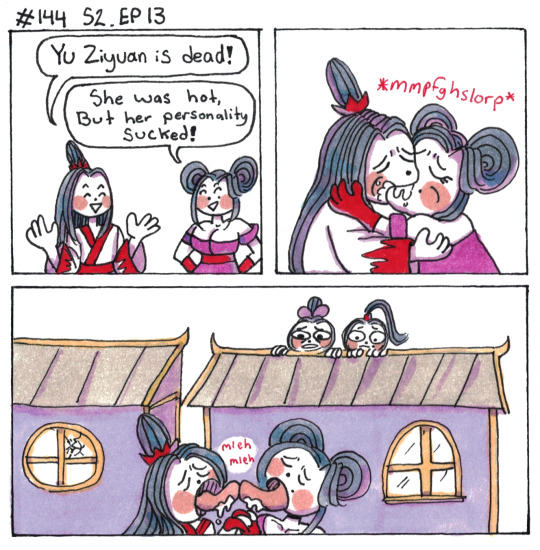
The most evil celebratory kiss
[First] Prev <–-> Next
#poorly drawn mdzs#mdzs#wei wuxian#jiang cheng#wen chao#wang lingjiao#I wrote a haiku that I almost used as the caption. Here it is:#“Up on the house top-Heterosexual kiss-Your mother is dead”#...I am not very good at poetry.#There was something so funny to me about the evil couple heterosexual sloppy kiss sandwiched between all this angst.#I get it - this is to make us really loathe these two and make the later revenge much sweeter but...honestly they were so funny for this.#I still do not really know how to draw people kissing so I will do what I do best and make it funny.#There are several points in which MDZS is a dark comedy and this is one of them.#Despite how tragic this episode is...My god did it also make me laugh the hardest.#I will have comics about the other moments. Stay tuned!#edit: forgor what day of the week it was. Happy Makeout Monday!
584 notes
·
View notes
Text
I want simple things
Like folding laundry with you
Anything would do
#spilled thoughts#original writing#haiku#haikus#my haiku#love poetry#love poem#my writing#poets on tumblr#poetry#poets and writers#my poetry#poem#i miss you#poet corner#poetblr#poetry writing#poems#short poems
1K notes
·
View notes
Text
i don’t know how we got here
but when the snow melts
i hope you’ll return to me
#letter i’ll never send#spilled ink#poetry#literature#short poem#writing#original poem#poems on tumblr#i love you#love#poem#short poetry#vent post#original poetry#my poem#sad poem#love poem#haiku poetry#haiku#dark academia#academia#spilled poetry#light academia#romantic academia#rowan rambles#art
210 notes
·
View notes
Text
Oh no, I hope no tumblr bot comes and turns this post to poetry
493 notes
·
View notes
Text
You might not love me,
But in ten years time, you’ll miss
The way I loved you.
#poetry#poem#spilled ink#my poem#original poem#my poetry#original poetry#love poem#poets on tumblr#poems#poems and quotes#poems on tumblr#daily poem#poemsociety#romance poem#short poem#spilled poem#prose#poems and poetry#haiku#haiku poetry#haiku poem#daily haiku#original haiku#poet#micropoetry#short poetry#poetblr#love poetry#poetic
250 notes
·
View notes
Text
#6037
Ancient coelacanth,
Ponder of the time you spent
For enlightenment.
76 notes
·
View notes
Text
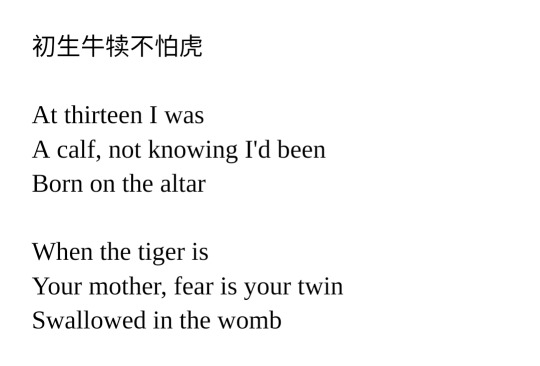
04/24/23
#初生牛犊不怕虎 is a chinese proverb meaning 'newborn calves are not afraid of tigers' because they don't know to be#spilled ink#poetry#napowrimo#haikus#my writing#tcp#id in alt text
924 notes
·
View notes
Text

There’s nothing quite like,
Being cuddled closely by
A quiet giant.
Haiku?..?
#haiku poetry#artbook#artists on tumblr#original art#art#my art#artwork#giant tiny#oc art#traditional art#digital art#tbitw
95 notes
·
View notes
Text

Brevity in bloom
Paints a portrait of our lives
In ways no words can
#my writing#poetry#haiku poetry#haiku#my photography#nature photography#nature#haiku poem#original haiku#original poetry#poem#life#spirituality#brevity#permanent impermanence#sacred nature#creative writing#spilled ink#poets on tumblr#writers on tumblr#writers and poets
59 notes
·
View notes
Text

a moment at dusk
we exchange smoke and laughter
Flags wave in the wind

light fades into dark
night fell in shedded blood (tears)
Flags limp on their posts
close up shots:
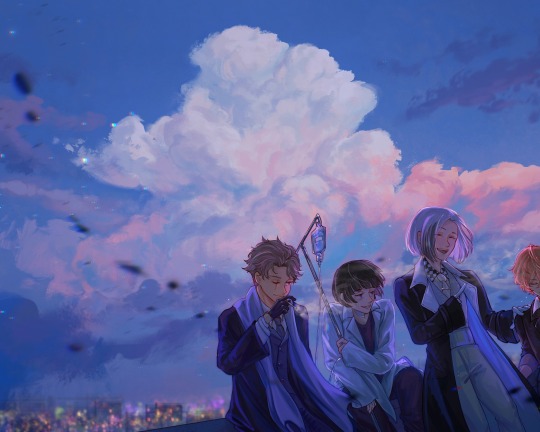


#bsd#bungou stray dogs#stormbringer#spoilers#iceman#doc#pianoman#nakahara chuuya#albatross#lippmann#angst#poetry#haiku was a collab with sis#anyways how to move on from stormbringer hahahahahelpme#the flags#they all deserve better <\3#spent hours and days on this :)) hope the angst reaches yall <3#my art
1K notes
·
View notes